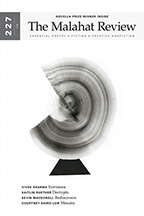Reviews
Fiction Review by Tim Rogers
C. P. Boyko, Psychology and Other Stories (Emeryville: Biblioasis, 2012).
Paperbound, 303 pp., $19.95.
Telling psychology’s stories in fiction, as C. P. Boyko has attempted here, is, at best, a tremendous challenge, at worst, impossible. Impossible? Hmmm…yes, possibly impossible. The prevailing discourse, indeed the very foundation of the discipline, is fundamentally realist. (Even the manner in which one can write within the discipline is legislated by the realist dogma of the American Psychological Association Manual of Style.) Any attempt to fictionalize its fabric confronts the discipline’s fundamental core. Perhaps that is why, as noted in the bumph that came with my review copy, “psychologists and psychoanalysts are subjects that literary fiction has been treating indirectly for the past couple of decades.” I believe that to tackle them head-on is to open a Pandora’s box that unleashes an inevitable conflict between the subject and its representation. So how did Boyko do?
Psychology and Other Stories consists of six longish short stories: (1) a young man trying to make sense of psychobabble as he struggles to sort out his identity; (2) the exploits of a disturbed man that climaxes in a pyromanic outburst; (3) a diatribe against the self-help industry; (4) an exploration of the experiential world of a deteriorating former executive; (5) the machinations of a recovering depressive interlaced with his explorations of Freud’s cocaine usage; and (6) the trials and tribulations of a clinical psychologist as he deals with a difficult court case and evolving family complexities. In all but the last the psychologist/ psychoanalyst lurks in the background—perhaps tacit affirmation of the tension noted above. In the last story, “The Blood-Brain Barrier,” we meet Daniel Strickland, a clinical psychologist working up a report on a man accused of murder. Here we encounter some delicious examples of how the convoluted and conditionalized discourse of clinicia fails to satisfy the needs of the legal system. In the end, our intrepid psychologist withdraws from the case, at no small risk, when he realizes he can’t fulfill the needs of the defense.
The remaining stories were more “patient-centered.” I found the varied approaches quite refreshing, leaving me to anticipate how Boyko might go about tackling this tension-filled world—never knowing quite what to expect. The book opens with “Reaction Formation,” which brings the Freudian defense mechanism of reaction-formation into full view. Here a person is thought to repress threatening impulses by unconsciously replacing them with their opposites. Young Archie, in trying to decide whether or not he is gay, can’t be sure if his ambivalent feelings are real or the result of this defense mechanism at work. He gets caught in an infinite regress: “what prevented one from forming a reaction-formation to a reaction-formation to a reaction-formation?” He’d found it impossible to uncover his true feelings, now, caught in a loop with no starting point. As Archie’s layers of reality fell away, I felt I was descending into a Lewis Carroll-like world—nothing to hold on to, nothing to grab—quite effective.
The second and fourth stories (“Eat the Rich and Shit the Poor” and “Signal to Noise”) are portraits of individuals as their maladies play out. In both cases, there are surprises when seemingly normal people slowly reveal their difficulties. The fifth story, “The Inner Life,” tells of Devon as he researches feverishly to uncover the history of Sigmund Freud’s cocaine use. As Freud’s story unfolds, so too does Devon’s. He is using this research as therapy to help recover from a depressive episode. Embedded in this story, we find a strong argument for the place of fiction in the scientistic world of psychology, and perhaps a key to why Boyko has chosen to write as he has: “Fiction, because detailed, would always be truer than fact, which could only ever be partial.” He suggests that a short story or a film would “be more telling than the most assiduously researched biography, because the facts could never…push through to the inner life.” Food for thought, not only for psychologists, but filmmakers and writers, too. The third story, “Paddling an Iceberg,” ended up being a strong critique of the self-help world, noting the frustrations and feelings of inadequacy inherent in perceived failures to achieve “change.” Here the conventions of fiction writing were at their thinnest, with the main character, Margo, seeming more like an excuse for a critique than a genuine person. Indeed, Boyko lapsed into some first-person moralizing at the end of the story to bring his critique home. Nonetheless, it was an interesting and thoughtful analysis.
Many of the conventions of psychology are a direct challenge to fiction writing. For example, a diagnostic category such as “manic depressive” is a substitute or shorthand for pages of “showing” actual detail. While useful in the clinical world, these labels are the ultimate “telling,” setting up a clear challenge to fiction. Boyko has done well to circumvent this with his consistent presentation of rich detail. Indeed, when he does use a diagnostic label there’s a clear disconnect between the label and the labelee. For the fiction reader, the appeal of Boyko’s work is to watch how he steps around this challenge. The tensions inherent in the realist underpinnings of mainstream psychology being rendered in a non-realist framework are celebrated in this book. The sparks created by this conflict generate considerable interest and insight. I doubt this book will make much of a dent in the realist bulwark of psychology. This world has its own defense mechanism, allowing, even sometimes encouraging, maverick presentations before continuing with business as usual, as if the challenge had never been issued. I’d expect that to be the fate of Boyko’s book in the psychology community; it may find a home with folks who have an interest in things psychological—the same crowd that reads Psychology Today. There’s certainly enough grist in Boyko’s book to keep the most avid psycholophile engaged.
—Tim Rogers









